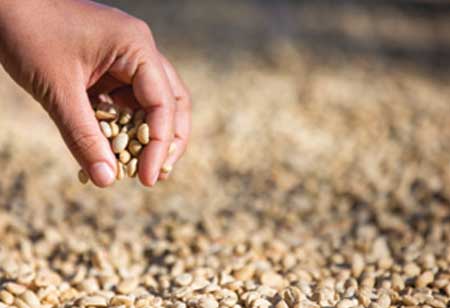Lidea is a French seed company ranked among the leaders in the European and international markets. With 8 production sites in Europe and 19 research stations across Europe and Latin America, its turnover is €414 million. The French company, headed by Olivier Paul, operates in the entire value chain; research, breeding, production and marketing of seeds. It has invested over €38 million in research and industrial development. It offers a wide range of seeds, with 6 million hectares worldwide sown with Lidea varieties.
The coming challenges regarding food security, biodiversity and climate change highly rely on seed science and an accurate prescient view of both agronomic and operational future production conditions.
Seed business efforts to research and development are directly dependent on sectors’ value-bringing (vegetables, flowers and field crops) innovation is continuously present at all stages of the process from selection to final product.
The understanding of the biological process of floral induction is growing fast and already predicts what could be tomorrow’s paradigm
Genome understanding and selection technologies have incredibly increased the efficiency in go-to-market with high-quality seeds; marker-assisted selection, CRISPR, Cas9 and now Cas12, gene editing, gene silencing and genetic modification traits. All the way through, agronomic research and process excellence have deployed constant efforts to increase yield and quality control and Lidea Seeds has all the innovative processes from field to bag.
The whole natural machinery that seed growers have to deal with (soil, water, temperature, and solar radiation) combined with genetics to be crossed has become one unique approach (genetics by environment), supported by machine learning and modeling all growing areas regarded to inner crop needs at their key development stages helping plantation and yield prediction.
The access to plant transcriptome data (genotype to phenotype/ SeedGerm platform) and the omics approach is a crucial pillar for seed companies to better monitor the key attributes such as gemination, illustrated by the recent research on DOG1-Like (delay of germination) genes which teaches about the origins of dormancy mechanisms that plants and seeds have experimented through the evolution process and recorded in their genome.
This is where the seed business is shaping a new era: putting all intelligence together. The incredibly dynamic seed research deploys 360°programs to control the whole pipeline and target the perfect match between genetics (traits) and environment (crossing conditions). Along with the powerful AI tools that support our models, we are not to neglect animal and vegetal intelligence and its performance in our production operations (chloroplast efficiency, pollinator management, symbiotic interactions).
The core subject in seed production is pollination, the tremendous progress that was made by scientists and agronomists to learn more about its biology, shedding, conformation, transportation and storage is highly commendable. The concept of patient/ non-patient pollen (entomophilous vs anemophilous) designs the nowadays research around how the seed business is going to manage the outdoor conditions for a reliable fecundation level, pledge for the two essentials; yield and genetic purity. Thus, new technologies are emerging such as pollen harvesting, maintenance, re-spraying with drones, bee teaching, UV pollination patterns and so many others.
Pollination is an extension of flowering. The understanding of the biological process of floral induction is growing fast and already predicts what could be tomorrow’s paradigm. As an example, the recent discovery of the sorghum SbGhd7 gene which regulates floral transition and represses flowering could be a huge shift for seed production as support to flowering delay management and substitute to cytoplasmic male sterility (CMS) technology with repressing pollen shed traits.
Besides, as we have to deal with fast-moving agro-climatic conditions, the industry is focused on offering its customers resilient products. Since the natural conditions on the production side are similar while the basic material to cross may have lower energy (when talking about hybridization), it is key to better monitor the parameters identified as crucial to keep productivity and cost under control.
As a consequence, this GxE approach might reshape or at least modify the interactions between selection and production. The more we learn about the behavior of our growing areas and our traits, the more we are up to optimize plantation and give drivers to maintain a relevant inbred or lines pool fitting both growing conditions and customer satisfaction.
The agronomic modeling outputs new perspectives covering an extensive field for progress.
Aren’t new technologies giving us confidence in hitting the next challenges? Weeding robots, connected fields, canopy monitoring through EVI technology, yield imagery and precision planting, are all supported by AI speeding up the learning process and delivering efficiency.
For instance, shouldn’t ribbon technology be a vision of the future, securing planting depth, kernel orientation, seed protection, fertilization and a clever response to seed storage and conservation? .
A performing and innovative seed company putting plant, human and animal intelligence all together strengthens new ways of thinking and stays ahead. Only a documented high-level view can provide the needed resources to be prepared for the exciting challenge of securing affordable feed - food with sustainable practices.



